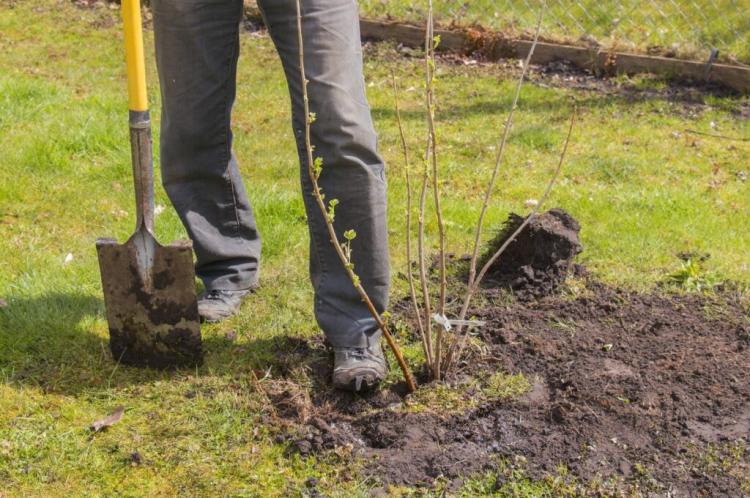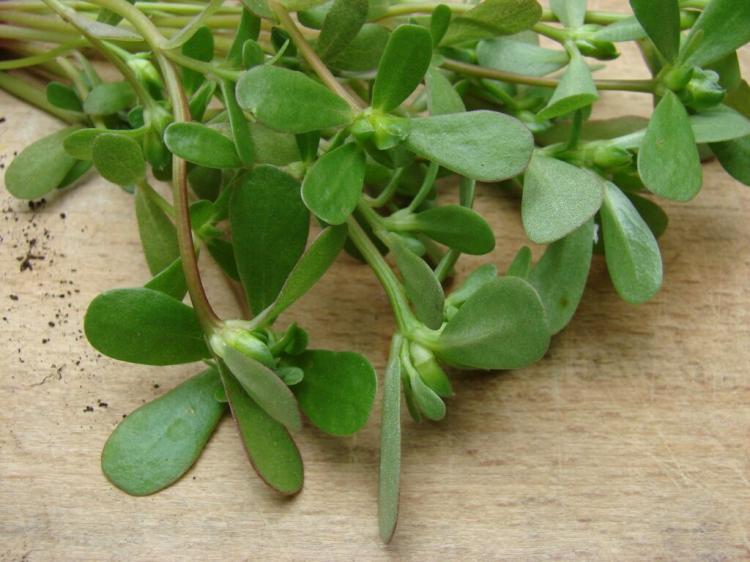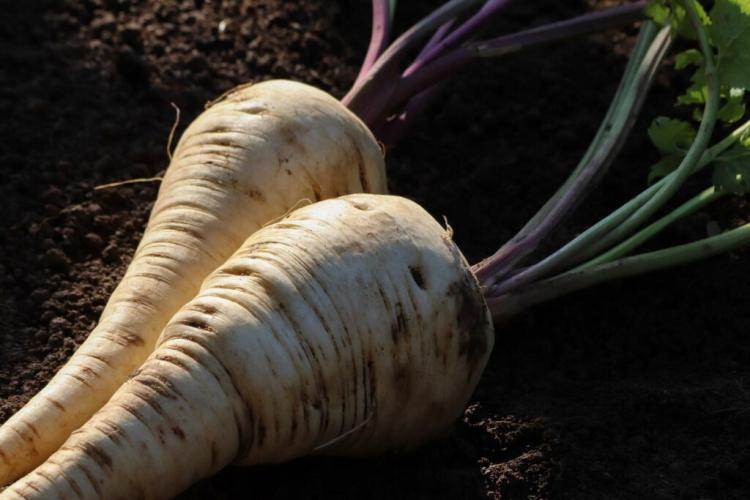Fertilizing Olive Trees: correct fertilizer & timing
The olive tree only develops its Mediterranean flair with the right care. We show how, when and with what to fertilize your olive tree correctly.
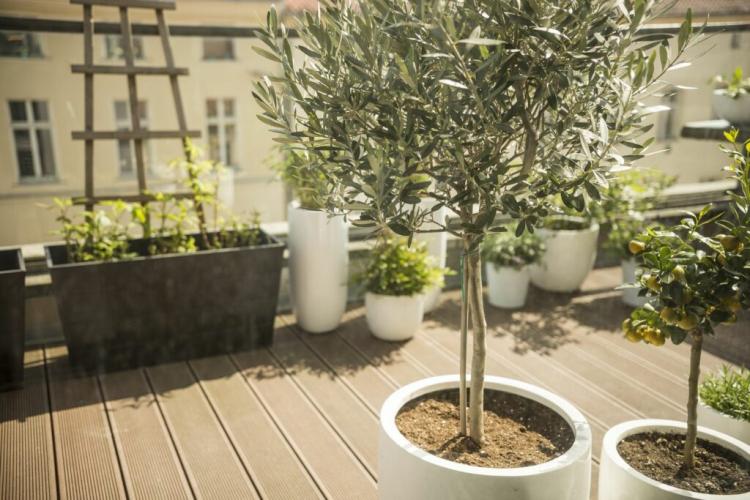
A regular supply of nutrients is essential, especially with olives in pots [Photo: Ania K / Shutterstock.com]
Olive trees ( Olea europaea ) originally grow on poor, nutrient-poor and stony soils in the Mediterranean region. They are very hardy and quite undemanding. Due to the climate, most of the olive trees in our latitudes are cultivated in pots. Here the volume of soil and thus the nutrient supply is very limited and regular fertilization is also necessary for the slowly growing woody plants. When fertilizing olive trees, you should be prepared for the individual nutrient requirements of the Mediterranean plant: the season, age of the olive tree and the location determine the need for nitrogen, potassium and co Plants.
When to fertilize olive trees
Table of Contents
The fertilization of olive trees takes place only in the growth phase between April and September. When the olive tree is overwintered during the cold season, fertilization is completely stopped. Olive trees should be repotted every few years and moved to fresh, nutrient-rich potting soil. In the first few months after repotting the olive tree, no fertilization is necessary, unless deficiency symptoms occur. If an olive tree does not show any symptoms of deficiency and has healthy growth, it usually does not need to be fertilized.
Young olive trees up to the age of two years should only be fertilized to a very limited extent, if at all. A quarter to a third of the recommended amount of fertilizer is sufficient for you. Seedlings and cuttings are not fertilized at all.
Tip : In the case of planted trees, you can ensure increased winter hardiness by fertilizing with potassium fertilizer in the autumn. The potassium helps harden the shoots and makes them less sensitive to frost.
At a glance: when should you fertilize an olive tree?
- Olive trees in pots are fertilized in the growth phase between April and the end of September.
- Freshly repotted olive trees do not need any fertilization in the first few months.
- Planted olive trees usually do not need any fertilizer, but autumn fertilization with potassium fertilizer increases winter hardiness.
- The olive tree is not fertilized during hibernation.

An increasing yellowing of the leaves can indicate a nitrogen deficiency [Photo: rudolfgeiger / Shutterstock.com]
Recognize deficiency symptoms in the olive tree
- Nitrogen deficiency : Even frugal olives can develop a nutrient deficit. Usually it is a nitrogen deficiency. This is noticeable by yellowing of the leaves and poor growth. If it has not been repotted or fertilized for a long time, a nitrogen deficiency is likely.
Note: Excess water and waterlogging at the roots can also trigger these symptoms. Before resorting to fertilizer, you should check whether the water has been in the coaster for days or whether the earth has been wet for a long time. - Potassium deficiency : A lack of potassium causes the tips of the leaves to dry out or even entire shoots to die off.
- Calcium deficiency : Olives prefer a slightly alkaline soil with a pH value of 7 – 8. If the pH value is too low, calcium deficiency can occur. This manifests itself in a yellow coloration of the leaves from the tip. The entire leaf is increasingly discolored and the veins lighten. Calcium-containing lime increases the pH value and at the same time supplies the missing nutrients. But first, check the soil pH.
- Phosphorus deficiency : A pronounced phosphorus deficiency in olives and shows as a reddish coloration of the leaves, but is extremely rare.
Fertilizer for olive tree: with what and how much fertilize?
Special fertilizers for olive trees, lemon and co. Have an optimal composition of nutrients for Mediterranean plants. They are usually available in stores under the name citrus fertilizers. If you don’t want to buy a special olive tree fertilizer, you can use a balanced NK fertilizer. Phosphorus is required for flowering and fruiting, but is usually contained in sufficient quantities in high-quality potting soil. Ideally, the fertilizer used should also contain traces of other nutrients such as boron, iron, manganese, molybdenum and zinc. In high-quality potting soil, these trace elements are usually also present in sufficient quantities until the next repotting.
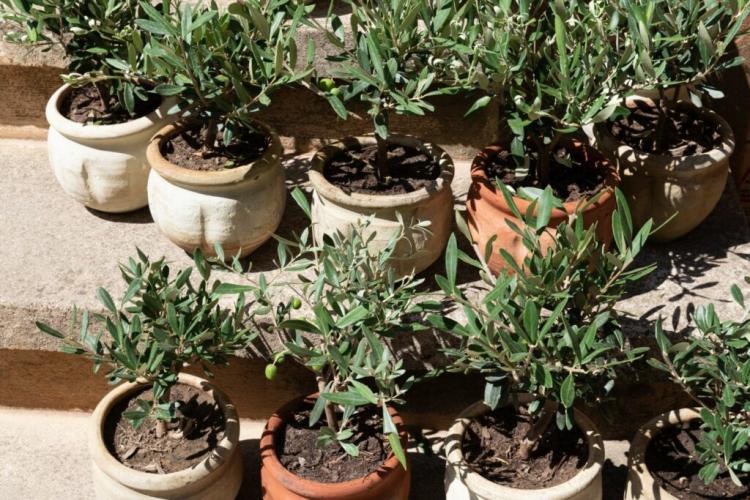
Freshly repotted or very young olive trees do not need any fertilization in the first few months after moving [Photo: sylv1rob1 / Shutterstock.com]
It should also be noted that an olive tree that receives a lot of light and heat grows faster than in unfavorable locations. This means that it uses more nutrients here, which is reflected in a higher fertilizer requirement. The type of fertilizer is also decisive for the frequency of fertilization.
Summary: what and how much should you fertilize an olive tree with?
- Special citrus fertilizers are suitable in the composition for olives and most other Mediterranean plants.
- Alternatively, universal fertilizers with an emphasis on nitrogen (N) and potassium (K), ideally with other micronutrients, can be used.
- Fertilization depends on the age, location and type of fertilizer.
Primarily fertilize the olive tree organically
Especially with frugal Mediterranean trees, an organically emphasized nutrient supply is advantageous. Here, the nutrients are stored in the soil and gradually made available to the roots. Fertilizers with a high proportion of organic matter, such as compost or liquid fertilizers that are easy to apply, such as our Plantura organic citrus & Mediterranean fertilizer, therefore have a gentle effect. It is not only the soil that benefits from the use of these fertilizers. There is also hardly any risk of over-fertilization. The use of plant residues from the food industry protects the environment and valuable resources. Olives are fertilized with our liquid fertilizer about every two weeks over the irrigation water. For this, 15-25 ml of the fertilizer are mixed with 5 liters of water and the olive tree is then watered as required.
Fertilize the olive tree with minerals
If the olive tree suffers from a severe nitrogen deficiency, mineral fertilizers such as blue grain can quickly provide a remedy. This can be recognized, among other things, by stunted growth or leaf fall after chlorosis. The nutrients are bound in water-soluble mineral fertilizers and are contained in a form that is directly available to the plant. However, it is not advisable to give mineral fertilizers in the long term. Especially with frugal plants like the olive tree, the risk of overfertilization is high and the sensitive plant roots can be damaged. Heavy watering or rain also carry the risk of the water-soluble fertilizers being washed out. Furthermore, mineral fertilizers are usually associated with high energy consumption and costs for the environment.
Fertilize the olive tree with home remedies such as coffee grounds
Coffee grounds are a daily waste product in many households, but they still have a high nitrogen content. In small doses and incorporated superficially, this is slowly released. However, if you want to fertilize your olive tree with coffee grounds, you should keep in mind that as it decomposes, it lowers the pH of the soil. A remedy for soil acidification is fertilization with crushed eggshells, which increase the soil pH value.
Incidentally, more unusual fertilizers such as nails and hair can be used in the garden as a substitute for horn shavings.
The home remedies also include plant extracts such as nettle manure. In addition to numerous micronutrients, fermented broths often contain significant amounts of nitrogen and can even be used undiluted against pests such as aphids ( Aphioideae ). In the case of planted specimens, manure made from comfrey ( Sympthytum officinale ) can also serve as a source of potassium in autumn to increase winter hardiness.
You Might Also Like Do Coffee Grounds Keep Away Squirrels?
Fertilizing olive trees: recognizing overfertilization
Compared to insufficient supply, over-fertilization represents a much higher risk. Over-fertilization often manifests itself in the form of symptoms of burns, the so-called nutrient burn. Shortly after fertilization, the leaves get yellow-brown tips and edges, which increasingly migrate inwards and cause the whole leaf to dry out. Some of the leaves can also curl up. Affected leaves usually fall off quickly. If only slightly over-fertilized with nitrogen, the olive tree develops long, thin shoots and hardly any flowers, but mainly leaves. A remedy for acute over-fertilization – for example with fast-acting mineral fertilizers – can be repotted in fresh potting soil. As much of the over-fertilized soil as possible should be removed from the root ball or rinsed off.
Another important maintenance measure in olive trees is proper pruning. You can find out how and when to prune olive trees in our special article.

